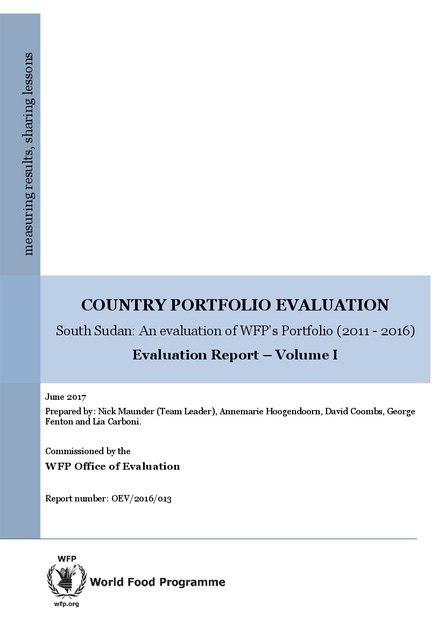
This country portfolio evaluation (CPE) covered the WFP South Sudan 2014–2017 country strategy and portfolio of operations during 2011–2016. It assessed: WFP’s strategic alignment and positioning; the factors and quality of WFP’s strategic decision-making; and the performance and results of the portfolio. The CPE was timed to provide evidence to inform the country office’s strategic orientation and feed into the design of its 2018–2020 interim country strategic plan. It was conducted by WFP’s independent Office of Evaluation together with an external evaluation team, with field work in January and February 2017.
The evaluation found and concluded high relevance, coherence with national needs and polices, and effectiveness of portfolio’s outputs. WFP assisted an average of 2.9 million people per year in a difficult and complex environment. At the outcome level, general food assistance including cash-based transfers and nutrition activities helped to prevent precipitous declines in food security. Reaching 300,000 students per year, school feeding was associated with improved enrolment and retention. WFP capitalized on its areas of comparative advantage, using its unrivalled ability to reach scale in conjunction with its partners. WFP displayed good cost awareness, introducing a range of innovations to minimize costs. However, food distributions were unpredictable as a result of downstream pipeline-management issues. Access restrictions were frequently imposed by the government and opposition, contravening protection and humanitarian principles. Nevertheless, WFP served beneficiaries based on need in government- and opposition-controlled areas. Purchase-for-progress activities and the country office’s experience in building resilience were limited while outcome monitoring was weak. Except in general food distribution and nutrition activities, opportunities to build coherence and connectedness by capitalizing on internal synergies were identified but largely unrealized. The sustainability of feeder roads and the quality of food assistance for assets were limited.
